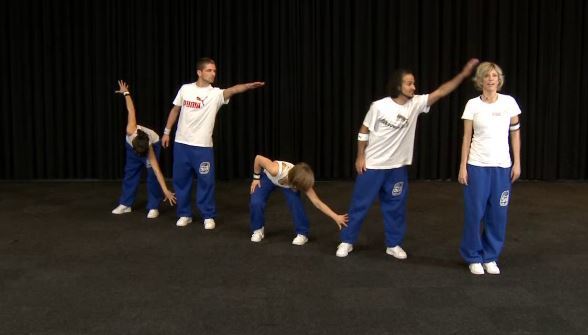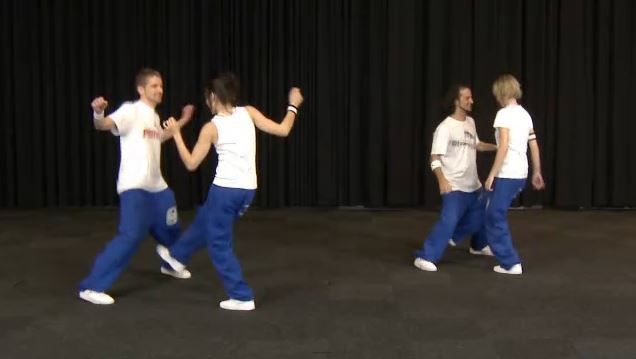General Informations
In this section, the dance moves are not the main focus; examples from the category Tips & methods provide concrete inputs for forms of organisations and exercises as well as inspiration for successful choreographies. The examples also contain suggestions for methodical-didactical implementation ways for working with music.
The focus is on a variety of actions to learn, use and arrange dance steps.
Acquiring and consolidating a movement pattern in different directions present some variety.
Helpful prerequisites:
- Experience with movement and music
- basics of orientation in space
- The steps for the combination (sequence of movements) are introduced
Tips for implementation:
- Sequences of steps that already include direction changes are more difficult to do when there is a change in different directions than those in which students are always facing the front.Only certain uses of space may be employed, according to the skills of the students.
- Please see "examples from schools" for a practical example
- Play some music during the practice phase (motivation). The sound volume can be varied.
Further steps:
- Performing a sequence of steps in different directions can be used as a method for practising as well as a choreographic element.
- Students can decide for themselves in which direction they would like to perform the sequence (to the front, to the back, face to face…)
Tips relating to the music: further information can be found under the heading Tips & methods > Music
- Good, motivating music is very important. Use songs that are currently popular every now and then. Bring faster and slower music to the lesson. These add variety and motivation to lessons.









